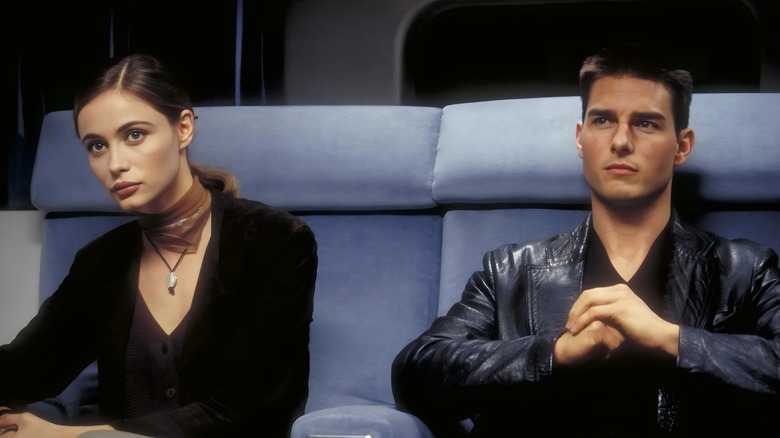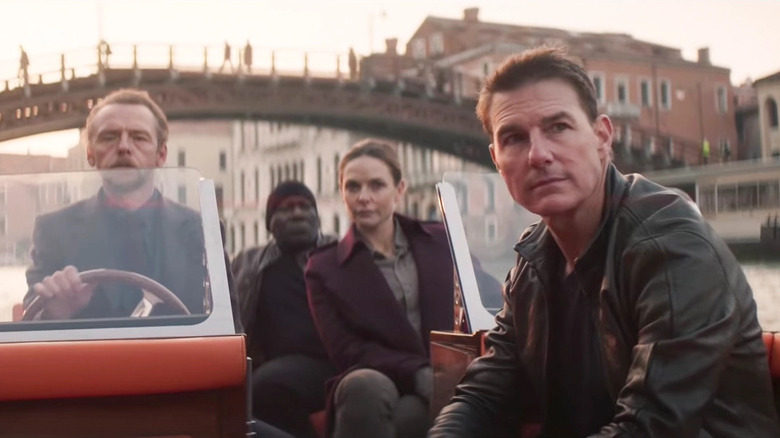The Mission: Impossible Theme Song Doubles As A Spy Code
Bruce Gellar's "Mission: Impossible" launched on September 17, 1966, five days after the debut of "The Monkees", eight days after the debut of "The Green Hornet", and nine days after the debut of "Star Trek". In January 1966, "Batman" made its debut, and "Gigantor" started airing in the United States. "Dark Shadows" started up in June of that year, and Chuck Barris' "The Newlywed Game" began the following July. It was a good year to be alive and watching television.
"Mission: Impossible" was, to remind readers, a spy series about secret agents working for an ultra-secret government agency called the Impossible Missions Force. IMF agents gathered in teams, put on disguises, and employed high-tech gadgetry to infiltrate the lairs of international baddies. Greg Morris and Peter Lupus appeared in all seven seasons of the show, and Peter Graves for the final six. Lesley Ann Warren, Martin Landau, and Leonard Nimoy appeared as well. The show once featured a two-part episode that was eventually recut into a feature film and released into theaters. Paul Stanley's "Mission: Impossible vs. the Mob" was the first "Mission: Impossible" movie.
One of the more striking details about "Mission: Impossible," though, was its aggressive theme song written by Lalo Schifrin ("Cool Hand Luke," "Bullitt," "Dirty Harry," many, many others). Schifrin's theme — bum bum BUM BUM! — was evocative of the show's thriller tension, accompanied as it was by visuals of a burning fuse.
Here's a fun piece of trivia about the theme: The first four notes of Schifrin's theme are two long beats followed by two short beats. If one translates that into Morse Code — dash dash, dot dot — it spells the letters "M" and "I." For "Mission" and " Impossible," you see.
bum bum, BUM BUM!
Lalo Schifrin, 91, was interviewed by the New York Post in 2015 about his famous theme, now that it was appearing in a series of hit films based on the "Mission: Impossible" TV series. Schifrin admitted that he tossed off the theme song in about as much time as it takes to listen to it. The finished product was, perhaps frustrating for musicians, written in 5/4 time, a relatively unusual time signature. Regarding that, Schifrin recalled a joke he told about it in the 1960s. Evidently, a German reporter was talking to him about the theme's unusual meter, and she asked him why he chose to compose it that way. Schifrin said it was for aliens: "Everybody knows that there have been beams from outer space coming because of interplanetary flights," he said. "The people in outer space have five legs and couldn't dance to our music, so I wrote this for them."
Funny thing is, the German papers actually printed that story. Yeah, Schifrin got an angry call from his agent about that.
Weirdly, Schifrin didn't comment on the Morse Code. It likely was intentional — he had used Morse code in another theme he scored — but he never commented on it publicly. Which was fitting, given the secretive nature of the show.
The "Mission: Impossible" theme features a light jazz flute solo, and the original version uses bongo drums for percussion. It has a light, jazzy feeling. Weirdly, when he was a kid, Schifrin didn't know jazz from a hole in the ground; he was raised listening to classical music. As he got older, he eventually bought — and shoplifted — jazz records from his local music stores and became obsessed. By the late 1950s, he was playing piano with Dizzy Gillespie.
The Grammy win
The "Mission: Impossible" theme song was so striking and hummable that it won Lalo Schifrin a Grammy in 1968. It played on the radio as well, eventually charting on the Billboard Hot 100 at #41. Leonard Nimoy, two years prior to his appearance on "Mission: Impossible," featured a rendition of the theme on his album "Mr. Spock's Music from Outer Space" (the same record that featured "Music to Watch Space Girls By," and "Twinkle, Twinkle Little Earth"). Nimoy's other novelty hits "Highly Illogical" and "The Ballad of Bilbo Baggins" weren't released until 1968's "Two Side of Leonard Nimoy". Peter Graves, as far as anyone knows, has not released any albums.
Starting in 1996, a new "Mission: Impossible" film series began, and Schifrin's famed theme has been remixed for the first two chapters. The 5/4 time has been tinkered with slightly in some of the remixes, usually allowing the theme to fit into a more common 4/4 meter. The remix for the 1996 feature film was done by Adam Clayton and Larry Mullen, Jr. of U2. For "Mission: Impossible 2", Fred Durst of Limp Bizkit remixed the theme and rapped over it. It was hip at the time.
For the remaining movies, each respective composer had reworked Shifrin's theme to fit their own sound. Danny Elfman, Michael Giacchino, Lorne Balfe, and Joe Kraemer have done their own renditions. That's to say nothing of the myriad jazz musicians who released covers over the decades. Along with "The Ballad of Gilligan's Island" and Neal Hefti's "Batman" theme, Schifrin's "Mission: Impossible" — and the Morse Code embedded within — may be one of the toughest, most awesome, most recognizable theme songs of all time.
Next week, it will be boxing Henry Mancini's "Peter Gunn" theme song for the championship.

